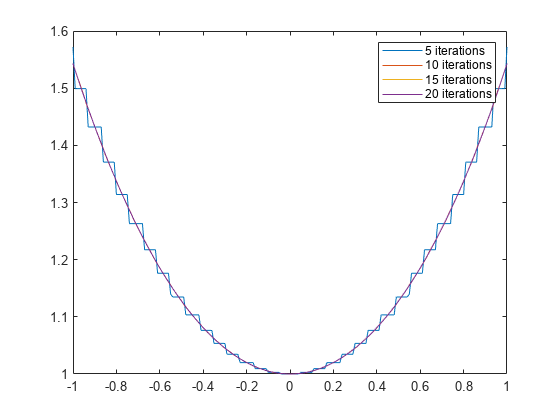cordicsinhcosh
Description
[
returns the hyperbolic sine (sinh) S,C] = cordicsinhcosh(X)S and hyperbolic cosine (cosh)
C of the elements in X using a CORDIC-based
approximation. The cordicsinhcosh function operates element-wise on
arrays. All angles are in radians. The function uses the maximum number of CORDIC iterations
for the numeric type of X.
Examples
Input Arguments
Output Arguments
Limitations
The
cordicsinhcoshfunction returns an error ifXis outside the domain of convergence for the CORDIC hyperbolic sine and cosine kernel. The domain of convergence is a function of the numeric type ofXand the maximum CORDIC shift valuen. The domain of convergence converges to around[-1.1182, +1.1182]. You can use thefixed.cordic.hyperbolic.domainOfConvergencefunction to compute the domain of convergence for a particularXandn.
Algorithms
References
[1] Volder, Jack E. “The CORDIC Trigonometric Computing Technique.” IRE Transactions on Electronic Computers. EC-8, no. 3 (Sept. 1959): 330–334.
[2] Andraka, Ray. “A Survey of CORDIC Algorithm for FPGA Based Computers.” In Proceedings of the 1998 ACM/SIGDA Sixth International Symposium on Field Programmable Gate Arrays, 191–200. https://dl.acm.org/doi/10.1145/275107.275139.
[3] Walther, J.S. “A Unified Algorithm for Elementary Functions.” In Proceedings of the May 18-20, 1971 Spring Joint Computer Conference, 379–386. https://dl.acm.org/doi/10.1145/1478786.1478840.
[4] Schelin, Charles W. “Calculator Function Approximation.” The American Mathematical Monthly, no. 5 (May 1983): 317–325. https://doi.org/10.2307/2975781.
Extended Capabilities
Version History
Introduced in R2023b
